Opinion
Sports in Kandy from the last century to recent times
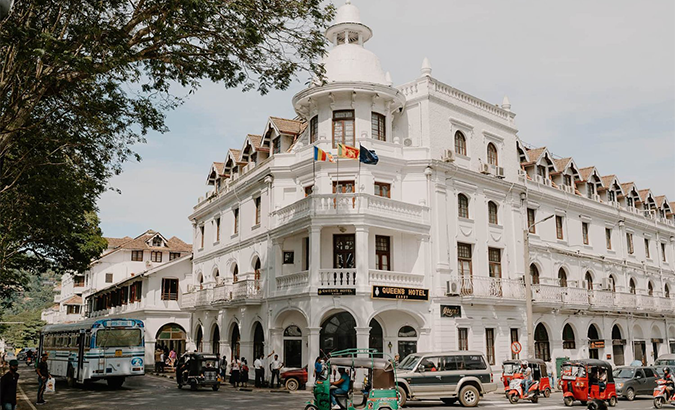
When one thinks of sports in Kandy in the last century the most important thing that comes to mind is the achievement of Duncan White. He was the first Ceylonese to win a silver medal at the Olympics which he achieved in the 1948 Olympic Games held in London. Up to now no other male Sri Lankan athlete has been able to emulate Duncan White. The only other Olympics silver medalist from Sri Lanka was Susanthika Jayasinghe which she achieved as a result of the gold medalist being disqualified.
Later there were the long distance runners who participated in the 10,000 metres event at the Olympics. They were Linus Dias, SLB Rosa and Ranatunga Karunananda. Linus Dias captained the Sri Lanka team at the 1960 Olympics held in Rome. All these athletes were from the Kandy District, and all three had been products of Berreawaerts College in Ampitiya.
Though they were not able to emulate Duncan White in winning any Olympic medals, Karunananda became a hero at the 1964 Tokyo Olympics by completing the last four laps of the race alone after all the other competitors had finished. He was cheered right to the end by the spectators, and he became a hero in Japan as well as in Sri Lanka.
In athletics another product from Kandy was MA Akbar who won a Silver Medal in pole vault at the first Asian Games held in 1951.Both Akbar and his elder brother met with their deaths under tragic circumstances. Whilst Akbar died of a motorcycle accident his elder brother, MA Hakeem died in a freak accident when he was officiating at an athletic meet. This was when a discus accidentally flew off an athlete’s hand and struck him on his head. He succumbed to this injury.
Cricket had two outstanding products of Kandy who brought fame to themselves as well as to the country. They were Muttiah Muralidaran and Kumar Sangakkara. They were from the two rival schools in Kandy, Murali from St. Anthony’s College and Kumar from Trinity College. Both of them hold records in world cricket with Murali holding a bowling record in Test cricket which might remain for a very long time. In addition to these two famous cricketers, there were ACM Lafir and Ruwan Kalpage, both from St. Anthony’s College and TB Kehelgamuwa from Dharmarajah College were in the national team at different eras. Niroshan Dickwella and Lahiru Kumara from Trinity College are presently in the national pool.
Whilst on cricket, I must mention that the first schoolboy cricketer of year was W. Premaratne of St. Anthony’s College, Katugastota when he won he award in 1957 and the second such cricketer was Maurice Fernando of Kingswood College, Kandy who secured the title in 1958.
Hockey was a sport that flourished in Kandy in the mid twentieth century with Kingswood being the leading school whilst Trinity and St. Sylvester’s College also produced good players. The most outstanding hockey player from Kandy was Freddie White (younger brother of Duncan White), an old Kingswoodian who was considered Asia’s best goalie at one time. The other national player from Kandy was Derrick Harvie who was selected as a national player while still a schoolboy at Kingswood. Iqbal Jumar was the third national team player from Kandy (also from Kingswood). The other two who were on the verge of national selection were Mohamed Jumar and WB Adikaram.
On a personal note, the hockey I learnt at Kingswood College helped me to play for the University of Ceylon Peradeniya team and captain the team in my final year. We for the first time won the inter-club tournament conducted by the Kandy District Hockey Association that year. It took the University over a decade to repeat this achievement. I was able to participate in the All-India Inter University Tournament held in Ahmedabad in 1961 as a member along with WB Adikaram another product of Kandy. I also got an opportunity to play as fullback with three illustrious hockey players from Kingswood College – TS Adahan for the Nationalised Services team and Dilsiri “Bullet” Peiris for the Government Services in the Hockey Nationals and with Freddie White for Bloomfield Club in the Andriesz Shield Tournament.
Women’s hockey too became a prominent sport in Kandy with almost all the leading girls’ schools taking to the sport. The game became popular in Kandy after the Kandy Whites women’s team dominated the hockey arena in the 1960s. Zohara Jumar was an outstanding player for Kandy Whites and she secured a place in the national team. Of the other players Nayani Madushani Jayaneththi (product of St. Anthoy’s Convent) takes pride of place as she captained the national hockey team in 2014/2015.
Rugby football was the sport where many players from Kandy excelled. The credit for starting rugby football has to go to Mr. LE Baze’, Founder Principal of Kingswood College who introduced the game at Kingswood in 1893, and the first match was played against Trinity College on August 11, 1906 with the match ending in a draw. Kandy produced most of the national players in rugby football with many of them being from Trinity College. The names of all who have donned the national jersey is too long a list to remember. There have been outstanding players such as Nimal Maralande, Denzil Kobbekaduwa, Mahinda Ratwatte, Eric Roles, Ken De Joodt, Mohan Sahayam, Glen Van Langenberg, etc from Trinity College.
The other players who represented Sri Lanka have come from Kingswood such as Nalaka Weerakkody, Fazil Marija, Eranda Weerakkody , Owen Mattau, Iqbal Jumar, etc, and from Vidyartha which produced players such as TB Wijesinghe, George Jayasena, Edwin Gunaratne, etc, St.Sylester’s had players such as Nimal Leuke, Tony Direckze, Lucky Peiris, etc and Dharmarajah which produced players such as CS Fernando, SU Mendis, Daya Jayasundera, etc. At present the captain of the national rugby football team is the Kandy skipper, Sooriyabandara.
In respect of football, Kandy used to have a very popular and very vigorously played inter-club tournament which attracted a large number of spectators with most of the matches being played at Bogambara grounds. But I cannot recollect any other players of yesteryear who represented Sri Lanka, except for Tom Ossen.
There were some outstanding boxers from Kandy such as Raymond, Bobby Jayaweera and Malcolm Bulner who were products of St. Sylvester’s College. Manju Dinesh Kumara Wanniarachchi (from Vidyartha College) won a Gold Medal at the Commonwealth Games in 2010 in the bantamweight category (but unfortunately he was stripped off his medal after failing a drug test).
Kandy also produced outstanding weight lifters in the SA Wijewickrama brothers and a son Athula, all of whom represented the country. It was Ransilu Jayathilaka who brought fame to Sri Lanka and especially to Kandy by winning medals at the Commonwealth Games and winning the title five times in succession at the Asian Games.
The schools in Kandy are involved in big matches in various sports. The oldest big match in cricket in Kandy is the Battle of the Maroons, that is the big match between Kingswood and Dharmarajah. Then there is the Trinity vs St. Anthony’s College big match. In Rugby the famous school rival matches are the Bradby Shield matches between Trinity and Royal College. There is also the match between Kingswood and Wesley College for the LE Blaze’ trophy. In hockey Kingswood plays Royal for the Lennie de Silva Trophy.
HM NISSANKA WARAKAULLE
Opinion
Learning from global models to address flooding and water shortage in Sri Lanka

by Sudharman Siripala
Sri Lanka is grappling with the increasing threat of climate change, which has led to unpredictable weather patterns. The country faces a dangerous combination of flooding in some regions and water shortages in others, a situation exacerbated by shifting rainfall patterns. Rivers originating in the Central Hills, such as the Mahaweli, Kalu, and Kelani, flow through much of the country, but these water sources are not being distributed evenly. Districts like Monaragala and Hambantota, located in the dry zone, are experiencing severe water shortages. To address this challenge, experts suggest the development of an interconnected river system to harness excess water during floods and redirect it to drier areas, ensuring a year-round water supply for agriculture and daily use.
Global Case Studies in River Management
Several countries facing similar water-related challenges have implemented successful water management systems that Sri Lanka could adapt to its unique circumstances:
The Netherlands – Room for the River Programme
The Netherlands, a country prone to flooding, widened its rivers and relocated dikes to create floodplains. This approach allows rivers to overflow without damaging urban areas, while preserving water flow and natural habitats. Sri Lanka could apply this concept by designating specific riverbank areas for temporary flood storage.
China – South-North Water Transfer Project
China’s massive project channels excess water from the flood-prone Yangtze River to drier northern regions. This system of canals and reservoirs could inspire Sri Lanka to divert water from rivers in the Central Hills to drier areas in the south and east.
Bangladesh – River Interlinking Projects
Bangladesh has implemented river interlinking projects to redistribute water from flood-prone rivers, such as the Brahmaputra, to drier regions. Sri Lanka could link its major rivers like the Mahaweli and Kelani to smaller rivers in water-scarce districts to balance water distribution.
India – National River Linking Project
India’s National River Linking Project connects major rivers to manage both floods and droughts. Sri Lanka could use similar strategies, connecting rivers around the 500-foot contour line in the Central Hills to help distribute water more effectively.
United States – Mississippi River and Tributaries Project
The Mississippi River system combines levees, floodways, and diversion channels to manage flooding. Sri Lanka could adopt similar flood-control measures in vulnerable river basins such as the Kelani and Kalu.
Japan – Underground Reservoirs and Flood Channels
Japan’s G-Cans Project in Tokyo channels excess water into underground reservoirs to prevent urban flooding. A similar underground system could be implemented in Colombo and other flood-prone cities in Sri Lanka.
Singapore – Marina Barrage
Singapore’s Marina Barrage serves as both a flood control measure and a water supply resource. Sri Lanka could develop similar systems to control flooding in urban areas and ensure water availability during dry spells.
Thailand – Chao Phraya River Basin Management
Thailand uses diversion channels in the Chao Phraya River Basin to prevent flooding in Bangkok and direct water to agricultural areas. Sri Lanka could replicate this by creating diversion channels to supply water to its agricultural zones.
Actionable Solutions for Sri Lanka
Develop an Interconnected River System
Establish water diversion channels along the 300-500 meter contour lines of the Central Hills to capture excess rainfall during floods and redirect it to drier areas.
Build Reservoirs and Storage Tanks
Construct reservoirs to store diverted water, ensuring a steady supply for agriculture and domestic use. Sri Lanka has around 14,000 ancient tanks out of 30,000 that could be revitalized for this purpose.
Improve Urban Flood Defenses
Drawing inspiration from Japan and Singapore, build underground reservoirs and flood channels in cities like Colombo to mitigate urban flooding.
Strengthen Watershed Management
Restore natural floodplains and create wetlands to absorb excess rainwater, as seen in the Netherlands, helping to reduce flood risks.
Encourage Public-Private Partnerships
Foster collaboration between the public and private sectors to fund large-scale water management infrastructure, leveraging models from China and the United States.
Leverage Technology
Utilise modern forecasting and real-time water management systems, similar to those in Bangladesh and Thailand, to monitor water levels and manage river flows dynamically.
International Collaboration
Form partnerships with countries that have successfully implemented flood control and water management systems to share expertise and technology.
Sri Lanka’s dual challenges of flooding and water scarcity, compounded by climate change, require immediate action. By developing an interconnected river system and learning from successful global water management models, Sri Lanka can mitigate the effects of floods while ensuring a sustainable water supply for agriculture and daily life. It is crucial for the country to act now, as these solutions have the potential to transform Sri Lanka’s water management system for the better.
Sudharman Siripala Managing Director of Geoinformatics Group and a Registered Licensed Surveyor, specializes in geo-spatial applications. He also serves as a freelance value chain consultant for Vivonta Green Tech Consultants (www.vivonta.lk)
Opinion
Doctor’s plight

Some people have found fault with a female doctor for not coming forward to identify her rapist and help make him pay for his crime.
Do they not realise the emotional toll of facing her rapist again?
There should be a way for survivors to testify directly to the judge without enduring such distressing encounters. Making a victim relive her trauma in this manner is akin to subjecting her to the ordeal all over again.
A Ratnayake
Opinion
Developing attitudes of schoolchildren for development
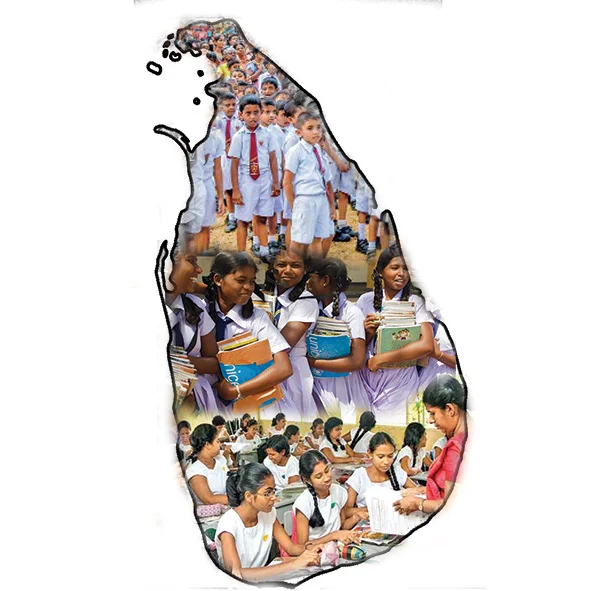
Sri Lanka was once at an economically comparable level with some of the world’s most developed countries in the 19th century. However, despite our country’s potential, we are still striving to fully develop. Many people often blame politicians, government officers, or various sectors for the situation. However, I believe the root cause of these issues lies not in any individual or group, but in the lack of good attitudes within our society.
We are investing significant resources into our education system, which is funded by the taxes of hard- working citizens. However, when we examine the outcomes, we realise that the academic achievements of our graduates alone are not enough. There are instances where professionals, despite having the necessary qualifications, fail to uphold ethical standards. In some cases, this even results in malpractice or harmful actions that damage our country’s reputation and progress. This highlights the gap between academic success and real-world responsibilities.
The education system, which is currently focused on competitive exams and rote learning, does not emphasise the development of attitudes and character in students. While our students are academically capable, many lack the qualities required to contribute positively to society. This lack of focus on social values, such as patriotism, selflessness and respect for elders, is holding us back from achieving the level of progress we deserve.
To address these concerns, I wrote to His Excellency, the President of Sri Lanka, on 24th September 2024, proposing education reforms that emphasise not only academic qualifications but also attitudes, ethics, and social responsibility. I suggested a holistic approach to university admissions and government recruitment, incorporating moral integrity, character, and extracurricular involvement, key traits for fostering well- rounded, responsible citizens. More importantly, I strongly recommended introducing a compulsory school subject, with both theory and practical components, focused on attitude development, which would be evaluated in university admissions. Encouraging extracurricular participation alongside academics will help shape ethical and socially responsible individuals.
I am pleased to inform you that the President, recognising the importance of these reforms, has directed the relevant ministries (by a letter dated 24th October 2024) to explore integrating these ideas into the education system. This marks a crucial step in transforming the values and attitudes of our youth for the nation’s benefit.
However, meaningful change requires collective effort. Parents, teachers, students, and citizens all play a role in shaping Sri Lanka’s future. Together, we must instill responsibility, ethics, and patriotism in the next generation. I invite you to share your thoughts and suggestions on further enhancing the values and attitudes of our youth. Your feedback will be invaluable in building a brighter future for Sri Lanka, one driven not just by knowledge, but by integrity and character.
Dr. Mahesh Premarathna
Research Fellow, National Institute of Fundamental Studies, Sri Lanka Email: mahesh.pr@nifs.ac.lk
-
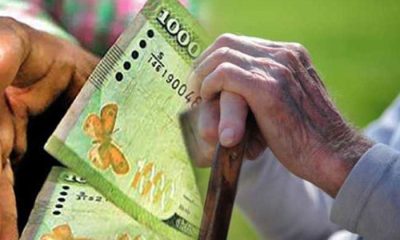
 News5 days ago
News5 days agoSeniors welcome three percent increase in deposit rates
-

 Features5 days ago
Features5 days agoThe US, Israel, Palestine, and Mahmoud Khalil
-
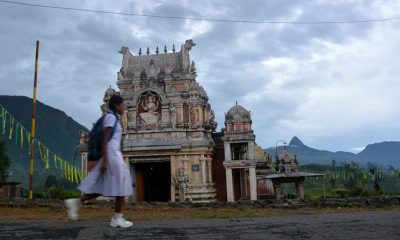
 News5 days ago
News5 days agoScholarships for children of estate workers now open
-
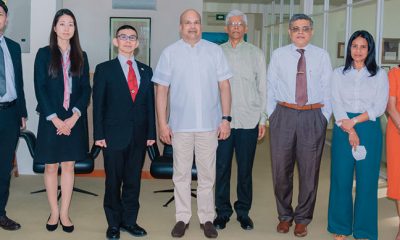
 News6 days ago
News6 days agoDefence Ministry of Japan Delegation visits Pathfinder Foundation
-
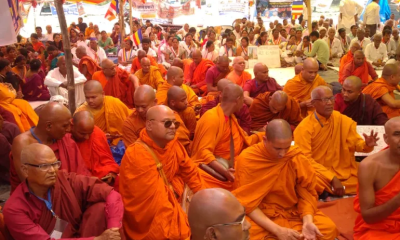
 Foreign News4 days ago
Foreign News4 days agoBuddhism’s holiest site erupts in protests over Hindu ‘control’ of shrine
-
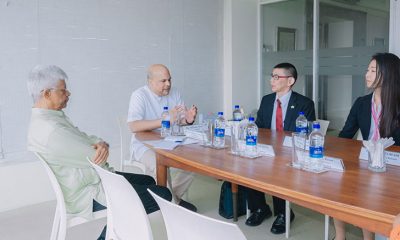
 News5 days ago
News5 days agoJapanese Defence Delegation visits Pathfinder
-

 Editorial6 days ago
Editorial6 days agoWhen promises boomerang
-
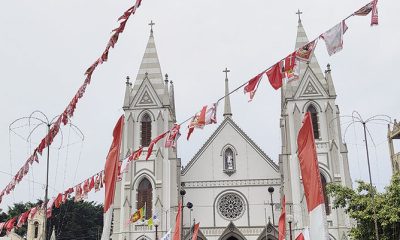
 News6 days ago
News6 days agoBan on altar girls upsets nuns, stirs talk on women’s church roles











